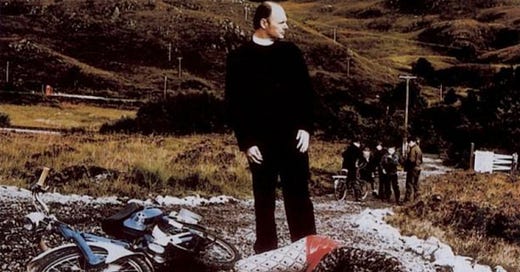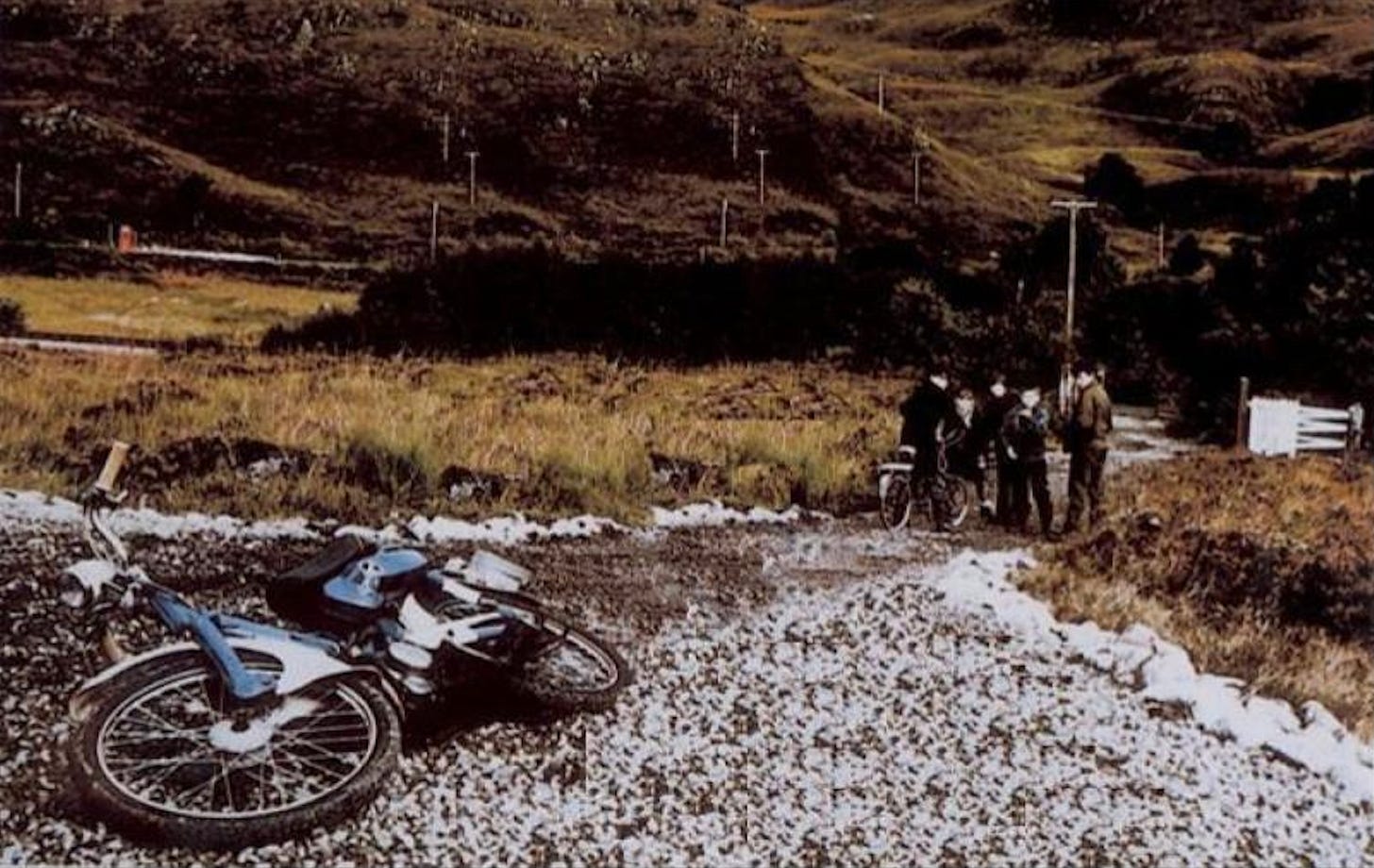It’s all about what you place into the frame.
In film class, we often analyze the contents within a frame. I enjoy adding a twist to this typical activity by removing an element from the image, and observing how this subtraction alters the story's perception. For this activity, I select a film still from a movie I suspect the students are not familiar with. Then, I crudely edit the image by removing a key element from the frame. My question is simple: What's the story here?
The aim is for students to speculate about the narrative based on the altered image. As we progress, I present different versions of the same still, each with unique alterations. This iterative process helps them realize how the composition within the frame guides the viewer's interpretation and assumptions about the unfolding story. The core lesson is about the power of visual storytelling and how filmmakers can direct their audience's understanding through careful composition.
Finally, I reveal the original, unaltered film still and pose the same question: What’s the story? And importantly, why do they think that's the story? Following this revelation, we delve into the intended plot of the film, which offers an opportunity to compare their guesses with the filmmaker's intentions. This discussion highlights the significance of visual elements in storytelling and encourages students to think critically about their choices as budding filmmakers.
Bringing this into the classroom:
Select a still from any film.
Create variations of this chosen still by altering or removing a detail (large or small) in each version.
Use it simply as an activity or expand it into an assignment.
Quick Engagement Activity
Turn the concept into a dynamic classroom game where students guess how an element's removal or alteration changes the film's narrative context or emotional tone. This quick, interactive approach is perfect for sparking interest and demonstrating the significance of details in storytelling.
In-Depth Assignment
For a more comprehensive analysis, students can work individually or in groups to create multiple versions of a film still, documenting their reflections on how each alteration shifts their understanding of the potential narrative. This deeper dive encourages critical thinking and a greater appreciation for the directorial choices behind every film element.
Steps for Exploration:
Individual Reflection - Begin with personal interpretations of the original still, encouraging students to note their narrative assumptions or emotional reactions.
Collaborative Analysis - Move to group discussions where variations are shared, comparing how perceptions change with each altered detail. This collaboration fosters a rich dialogue on the subjective nature of film analysis.
Critical Dissection - Guide students through a detailed examination of their changing interpretations, emphasizing the role of context and visual cues in storytelling.
Consolidation of Learning - Conclude with a project or presentation where students synthesize their insights, applying these concepts to broader film studies or their creative work.
This flexible assignment offers a creative method to engage students in the nuanced art of film analysis. It can be scaled from a quick, engaging classroom activity to a detailed, reflective project, making it a valuable addition to any film education curriculum. This activity deepens students' grasp of narrative construction and fosters a nuanced appreciation of cinema as a complex, layered art form. It also prompts them to carefully consider the film elements they include in the frame while crafting their films.






